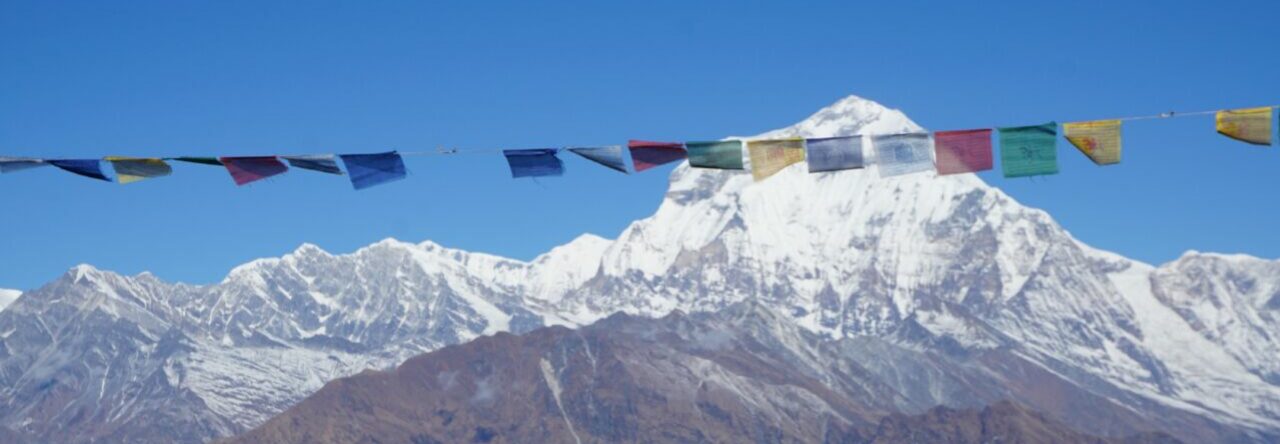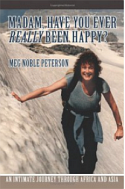(December 8 & 9, 2018)
Hey folks! Merry Christmas and a prosperous New Year. Thanks for your patience as I get back in the saddle and finish the trip Cary and I took to Nepal last year at this time. I would never have imagined it could take so long!
 You may remember that we had just finished a long, steep climb to Bayeli, where we were bombarded by a diverse group of trekkers, including thirty-eight members of the graduating class in computer engineering from Kathmandu University. As we were leaving the next morning, I was amazed to see a group of Nepali students checking their phones outside the tea house before they began their trek. It’s a universal addiction that knows no geographic boundaries! Meanwhile, we were satisfied to groove on the plethora of mountains surrounding us.
You may remember that we had just finished a long, steep climb to Bayeli, where we were bombarded by a diverse group of trekkers, including thirty-eight members of the graduating class in computer engineering from Kathmandu University. As we were leaving the next morning, I was amazed to see a group of Nepali students checking their phones outside the tea house before they began their trek. It’s a universal addiction that knows no geographic boundaries! Meanwhile, we were satisfied to groove on the plethora of mountains surrounding us.
I can’t remember more beautiful trails than we were treated to on this next leg of the trek to Khopra Ridge. And because we went slowly, we savored every moment. (that didn’t stop us from taking pictures, ‘though our hands were freezing). I recall sitting on a ledge, looking into a grotto covered with moss-covered rocks and dripping vegetation. Such moments defined tranquility for me. And both of us were in no hurry nor wanted to win a race. We were there to absorb and delight in the natural beauty of these Himalayas.
Here are a few scenes along the way. Click on photos to make larger.
We took our time, never realizing how far we had to go, nor the difficulty of the trail. We frequently encountered yaks grazing. The worst part was a steady downhill for more than three hours. Luxuriant bamboo flourished in the woods as we reached a turbulent stream and crossed a rickety bridge, once more heading up a killer incline for another three hours. How we chided Buddhi, who assured us at every turn, that it was just thirty minutes to our destination. Yeah, right.
Suni, of course, had arrived before us and doubled back to bring tea and cookies, since we had had no lunch. In the meantime, power bars and walnuts kept us going! And we used up two quarts of water.
 After six hours and fifteen minutes, we arrived at Christibung (Dhankharka) and enjoyed the best lodge so far. Beautiful large rooms, great lighting, and western toilets. How good can it get? While there we met a delightful couple, Kieren McIntyre from New Zealand and Raiko Rafeeq from the Republic of Maldives in South Asia. The evening was spent in lively conversation with guitar strumming by the cook in the background.
After six hours and fifteen minutes, we arrived at Christibung (Dhankharka) and enjoyed the best lodge so far. Beautiful large rooms, great lighting, and western toilets. How good can it get? While there we met a delightful couple, Kieren McIntyre from New Zealand and Raiko Rafeeq from the Republic of Maldives in South Asia. The evening was spent in lively conversation with guitar strumming by the cook in the background.
What a great feeling to know, as we started out, that this day would be our final bruising uphill to Khopra Ridge. And it turned out to be rather warm, and so sunny all morning that I wore my sun glasses for the first time! We came upon what looked like yak or sheep hair in several places where the animals gathered, as well as stands of impressive old trees and rhododendrum.
We also came upon wild primrose plants, caterpillars, and a pika, a tiny and unusual rodent/gopher. As you can imagine, Cary was vigilant when it came to any form of vegetation or animal life.
The trail wound through fields of high grass where you could see stone slabs on which salt had been sprinkled for the animals. This was necessary for their health, nutrition, and fertility. Yaks and nyaks (females, with smaller horns) roamed freely throughout the land.
The guest house we had just left owned about fifty of these animals, and the owners have to find them in the morning in order to milk them. In the spring they have their babies. I can’t imagine what a task that must be!
 How glad we were to bump into Kieren and Raiko, as they passed us on their way to the ridge.
How glad we were to bump into Kieren and Raiko, as they passed us on their way to the ridge.
The climb was intense, constant, and with lots of exposure (not my favorite). We carried a thermos of coffee and some biscuits, because there was no guest house along the way to stop for lunch. Instead, we relaxed on one of the many stone “seats” (chautari) designed for the porters, to rest themselves and their packs. They were made by piling stones to create a platform. There was often a ficus tree planted in the center to provide shade, and in some there were memorials dedicated to relatives or fellow climbers.
The fog started rolling in two hours before we reached the ridge. It seemed endless, and just as we were beginning to feel discouraged, Suni appeared with more hot coffee and biscuits to help us with the last push up. We were so grateful!
 After a most welcome snack, we continued up into the fog.
After a most welcome snack, we continued up into the fog.
And just as we reached the top, it lifted, giving us a glorious view of the sun setting on Annapurna and Annapurna South.


Later we would go out of the lodge and watch as the peaks came in and out of the clouds and the sliver of new moon rose above them.
Kieren, Raiko, and the Latvian climbers joined a large group of climbers seated around the metal fireplace, trying their best to get warm. But it was most inadequate and smoky, even using copious amounts of wood and hardened yak manure for fuel. We decided this was the coldest night so far, and donned every piece of clothing in our packs. It was less than 40 degrees inside.

At times like this you really appreciate central heating, nice bathrooms, and a place to put all the “necessities” and toiletries that you feel are essential. But are they really necessary? It is difficult to simplify life, isn’t it?
The next morning Buddhi woke us early to see the sun rise over the mountains. Kieren had been on the ridge since 4 AM with his camera and tripod, photographing the stars and moon. We walked around the lodge on the slate steps, trying our best to capture the magic of the morning light as it came up and lit each mountain in its path. Time stood still. Nobody talked. We were all in the moment, in our own way.
 We were at 12,000 ft., my hands were freezing, I had no tripod, the wind was blowing, and I was breathing hard while I took this video. It’s not the best video I have taken, but it will give you an idea of the majesty of the mountains.
We were at 12,000 ft., my hands were freezing, I had no tripod, the wind was blowing, and I was breathing hard while I took this video. It’s not the best video I have taken, but it will give you an idea of the majesty of the mountains.















































































































































































































































































































































